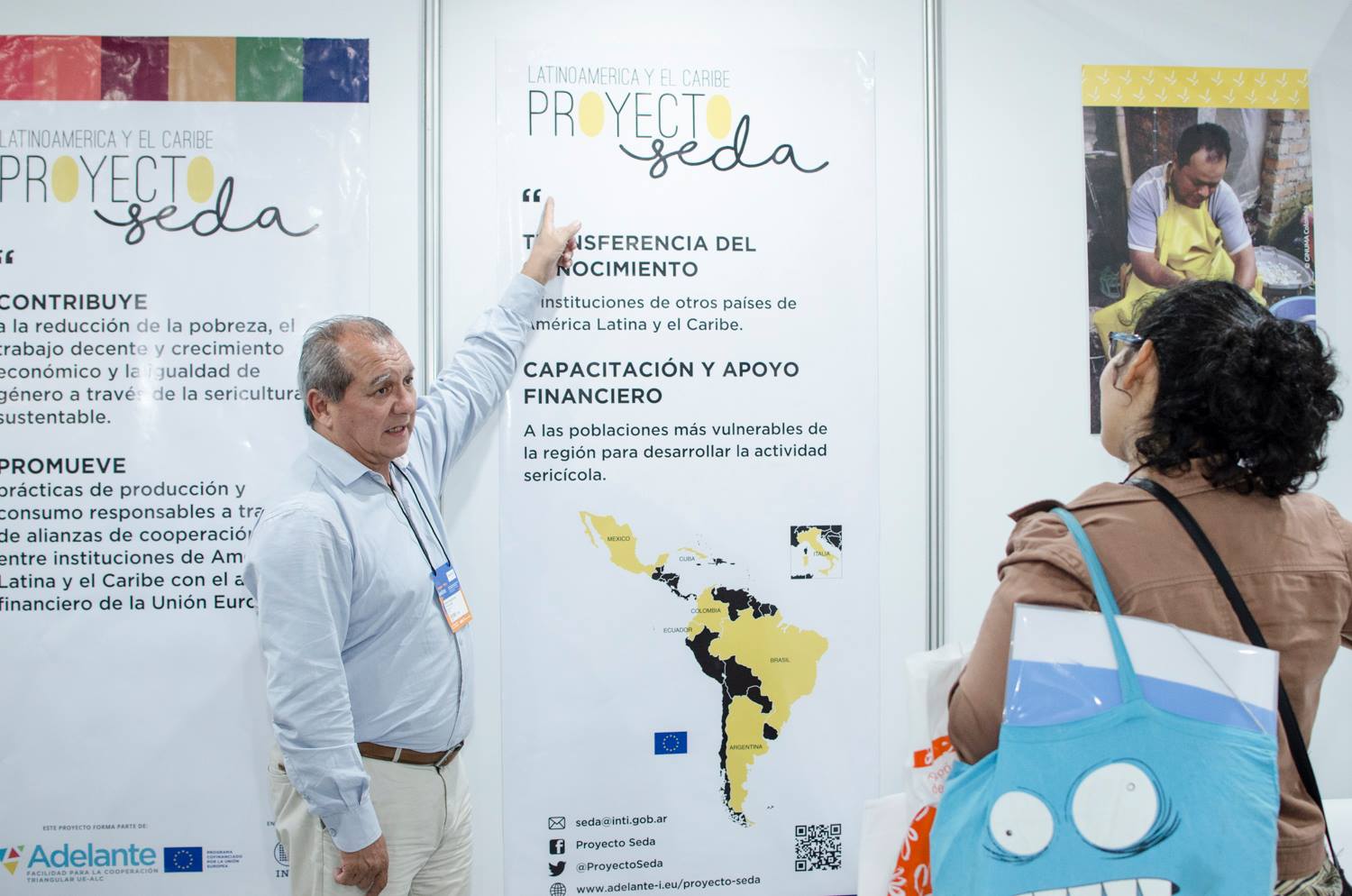The Seda Project at Emitex 2019

The Seda Project, an initiative promoted by the National Institute of Industrial Technology with the financial support of the European Union through the ADELANTE programme, participated in Emitex - the exhibition that brings together all the textile industry players - on 9, 10 and 10 April 2019 with the aim of informing the participants of the progress of its four-year work plan, which was launched in January 2017.
During the 3 days of the exhibition, the Project's stand included a space for talks on primary production, material transformation and innovative uses of silk. In the showcases, besides the silk products that were displayed, visitors could observe silkworms weaving their cocoons and 3 and 4 week old silkworms feeding on blackberry leaves, their only food. As part of the plan to raise awareness about responsible production and consumption, and the importance of adding local value, a textile artisan was present at the stand spinning natural fibers, including silk, for the exhibition visitors.
In addition, the space had also an interactive panel in which visitors were invited to reflect on the relevance of the Sustainable Development Goals to which the Project contributes for the development of the villages. During the three days, 214 votes were received. The SDG that came first was #SDG1 with 56 votes, followed by #SDG13 with 48 votes and #SDG8 with 43 votes. #SDG5 and #SDG12 got 27 votes and #SDG17 received 13 votes.
In order to raise the visitors' awareness on the importance of the added value in the sericulture chain, those who visited the stand could approach the world of the primary production of silkworms and marvel at the variety of options of transformation of the material into high value-added products on the market of fashion, jewelry, cosmetics, medical products, among others in Latin America and the Caribbean. This itinerary culminated with a weaver weaving silk cut fiber and teaching the craft technique.
Profesionals from Argentinean partner institutions INTI, INTA and FAUBA were present in the exhibition's conference room. Patricia Marino from INTI spoke about the SEDA Proyect, Francisco Pescio about primary production, Hugo Encisco about textile material transformation, and Horacio Alvarez about natural dyes.
The SEDA Project seeks to help in the reduction of poverty in several countries of Latin America and The Caribbean through the development of sustainable sericulture. It is an activity with high potential of improving the life quality of the most vulnerable populations and that may be carried out by small entrepreneurs that inhabit rural areas, craftsmen and/or cooperatives. The Project's mission is " positively contribute to the strengthening of the silk value chain, as a production chain with the capacity of generating more quality jobs", states Eng. Patricia Marino, Technical coordinator of the SEDA Project.
Since the implementation of the initiative, new producers from Argentina and the region have joined. Throughout 2018, nearly 100 people from Argentina, Brazil, Colombia, Cuba, Ecuador, and Mexico were trained and received technical assistance, i.e. countries with entities related to the Project.
The institutions from the countries that take part in this initiative are universities, from Argentina FAUBA, specialized in genetic improvement, from Brazil UEM, specialized in basic research for the treatment of silk worms diseases; in Colombia, research and innovation in new materials for medical, cosmetic and food applications; from Ecuador UEA, specialized in growing and rooting of white mulberry tree and assistance centers that promote sericulture work. "The complementary of forces and expertise of the partners strengthen the Project and allow to combine synergies for a successful development", highlights Bach. María Eugenia Suarez, responsible for the Project's institutional articulation.







